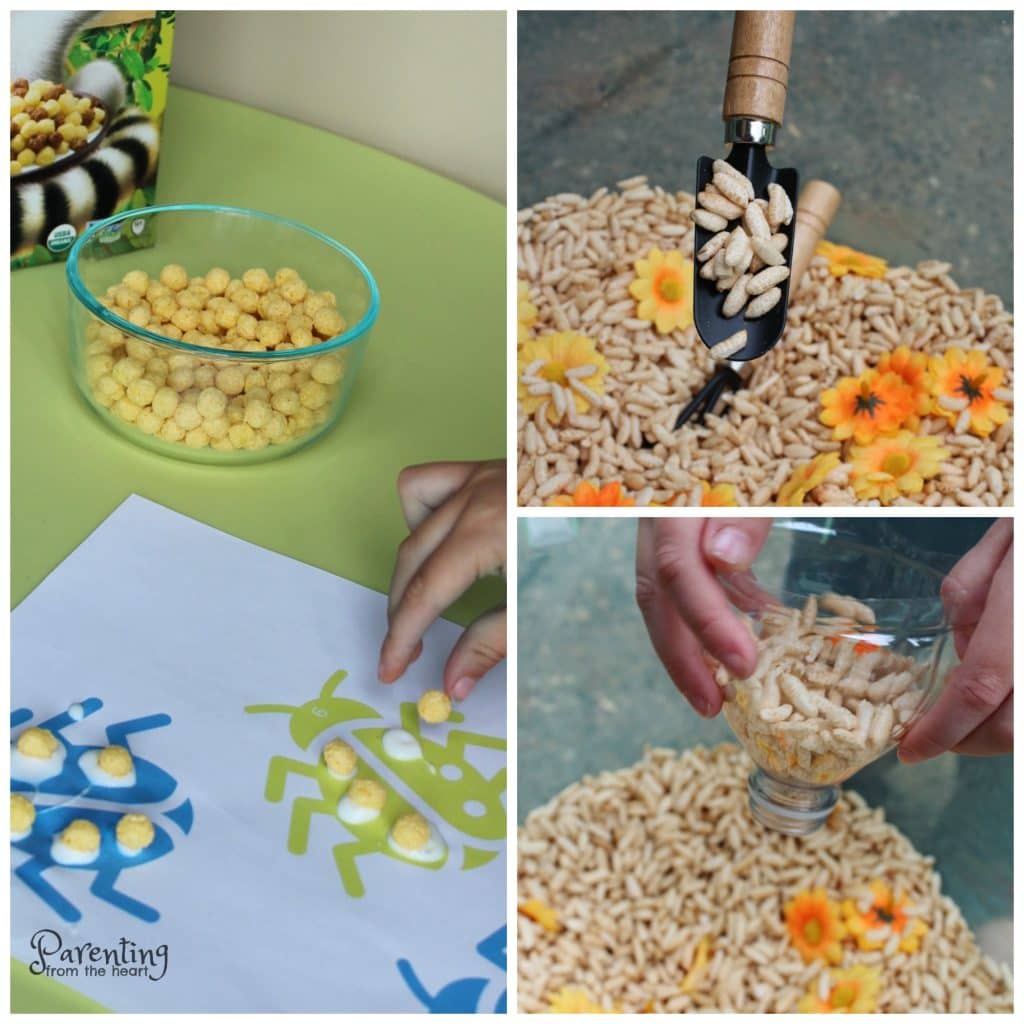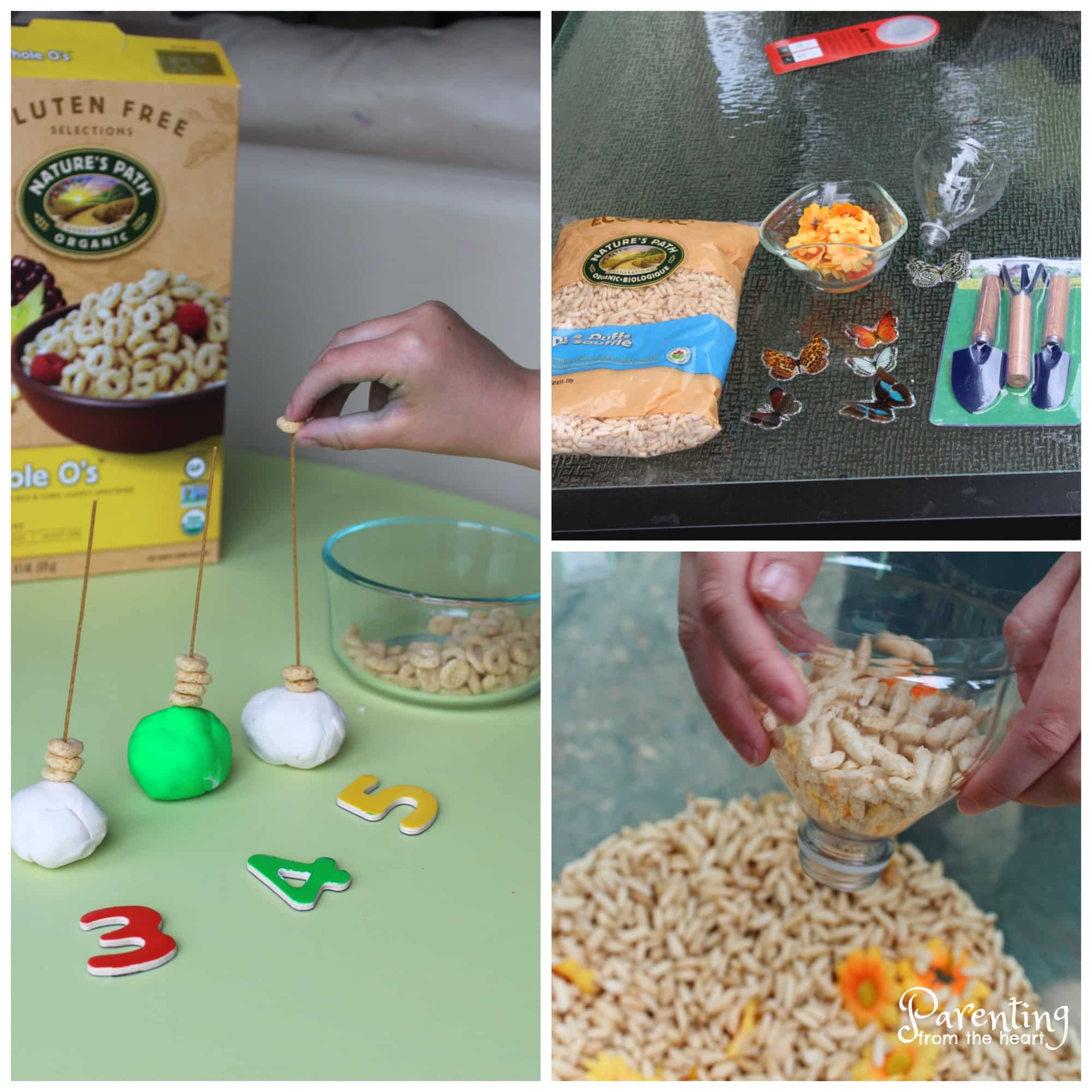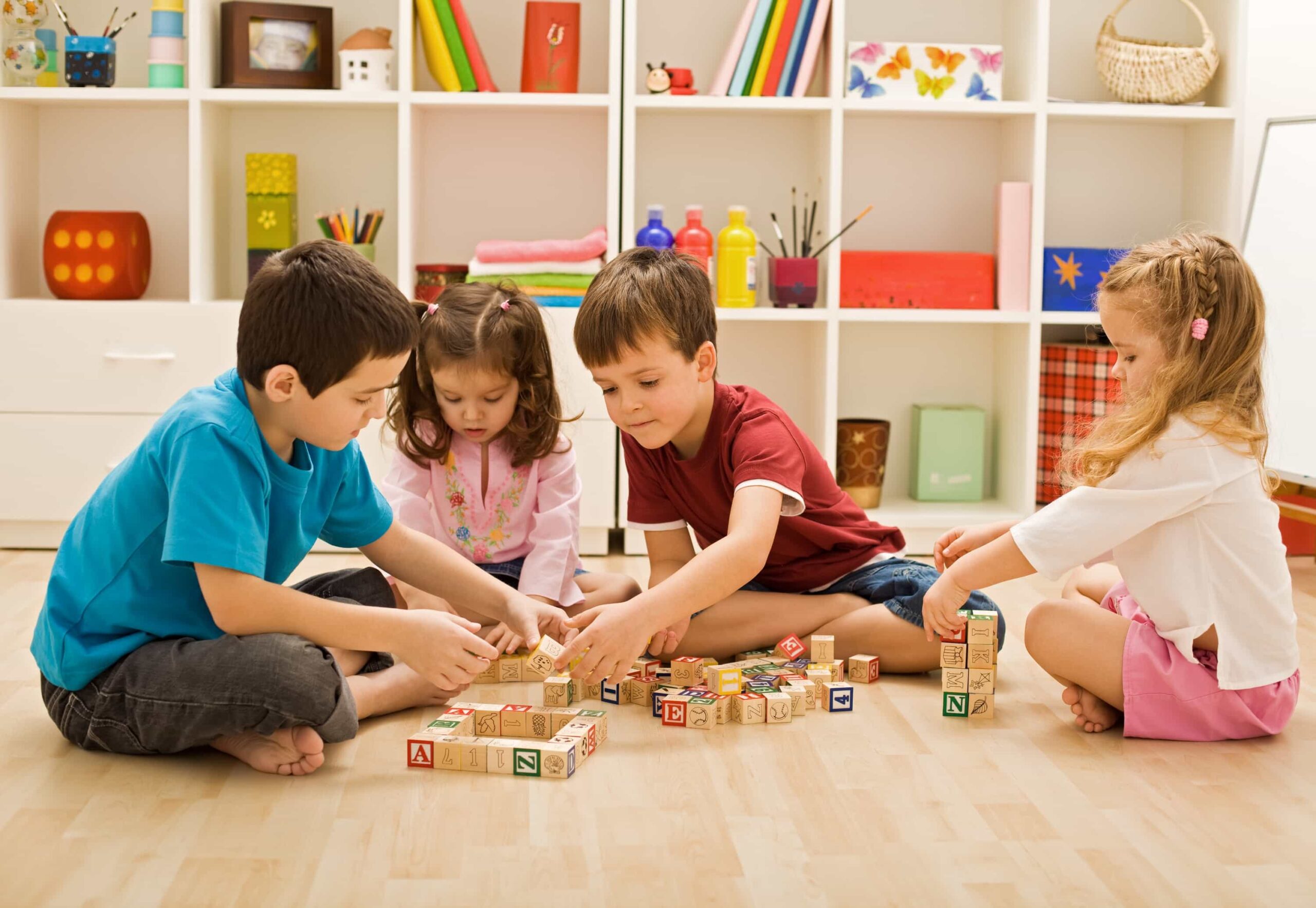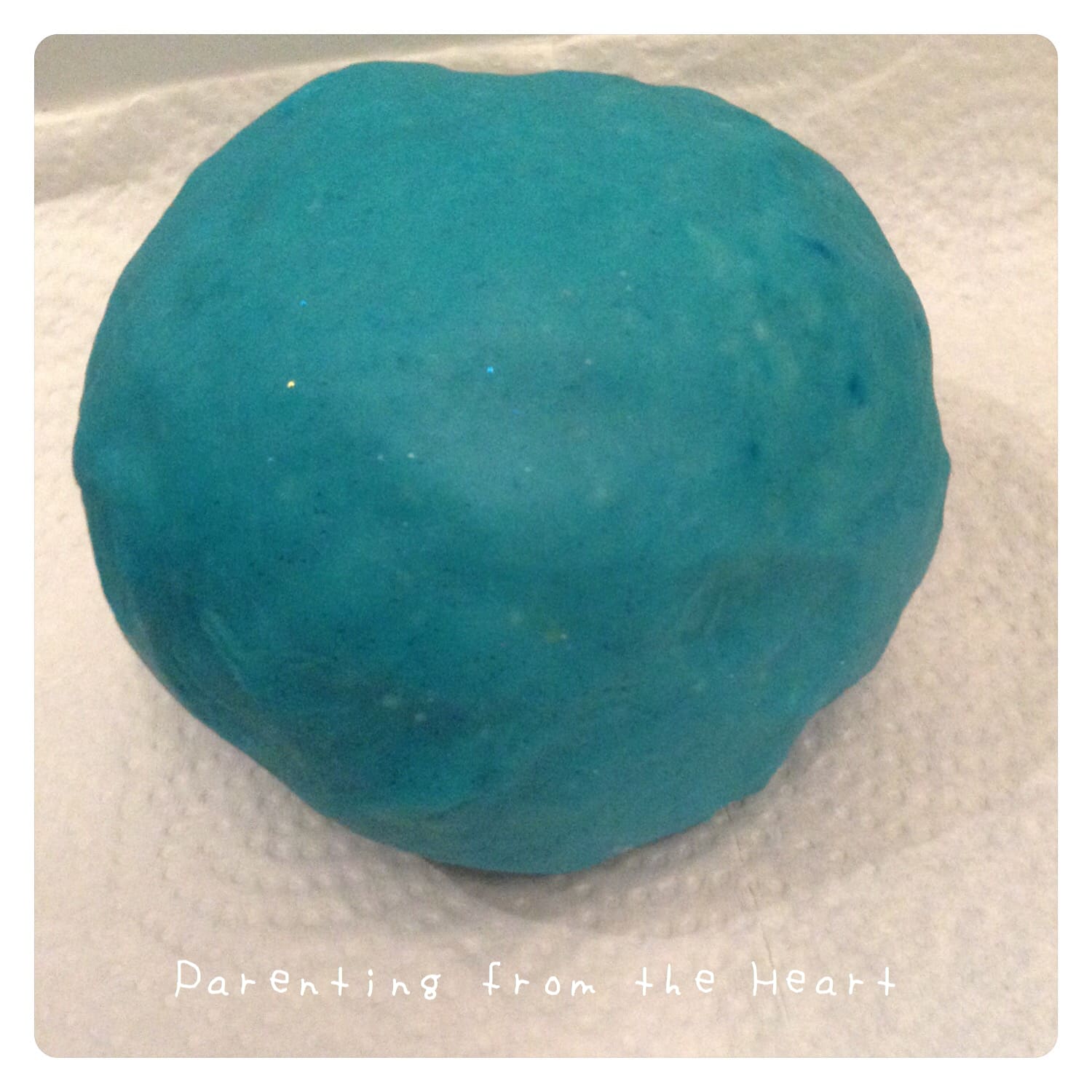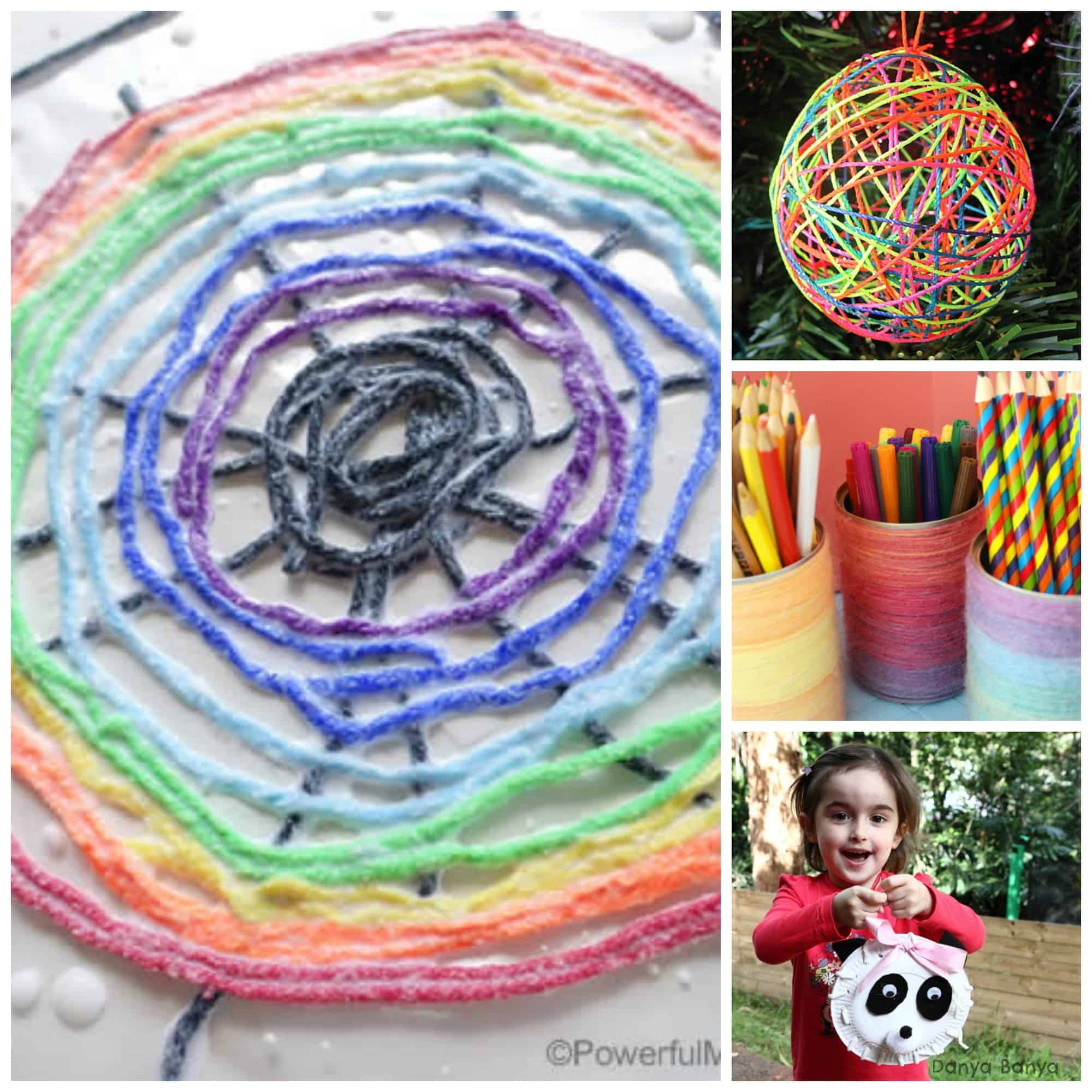Taste-safe kids activities can be hard to come by so we came up with three play-based learning activities using cereal. Seriously, they’re so much fun!
As a proponent of play-based learning, the question I get asked the most by parents is how to make kids activities baby-safe and taste safe. It goes without saying, toddlers LOVE to put things into their mouths. There are some preschoolers who continue to discover their environment through oral input too. For these children, glue, pom poms, googly eyes and other standard craft materials might not be the best. The truth is though, taste-safe kids activities can be so much fun!
Disclosure: I am a freelance writer for Nature’s Path Cereals and received these cereals for free.
Recently, my kids and I took some of our favourite cereals and came up with different play-based learning ideas.
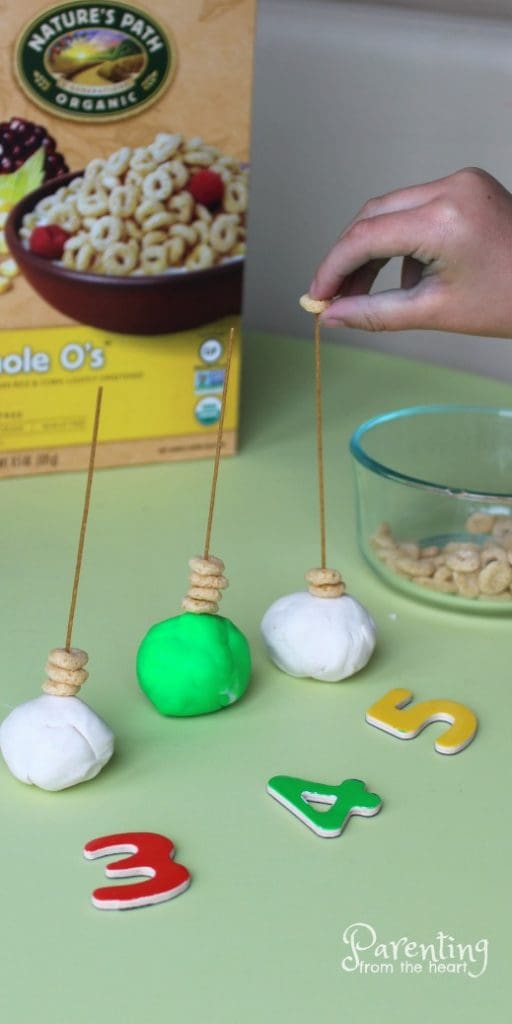
3 Taste-Safe Kids Activities Using Cereal
1. Puffed Rice Sensory Bin
Sensory play is any play that involves the senses. Of course, taste-safe kids activities are a wonderful way to procure the benefits of sensory play.
What you need
- Nature’s Path Puffed Rice Cereal or similar (Koala Crisp is awesome for this too)
- A large clean bin or container
- Themed materials (optional)
- Large kitchen utensils (i.e. slotted spoons, spaghetti spoons, tongs, plastic cups)
What to do
- Dump cereal into bin.
- Add thematic items if you so choose. Examples include ocean, garden, frog pond, zoo, or farm animal themes. Recently, we did a garden theme and used small, clean garden tools, fabric flowers and butterflies.
- Option to make your own funnel using the top of a plastic bottle. Add electrical or duct tape around the top if the edges are sharp. This tends to work better than a traditional funnel because the mouth is wider.
- Enjoy!
What they’re learning
Through sensory play, children are able to test hypothesises, learn cause and effect, conservation of mass (pouring cereal from one cup to another), and so much more. They also work on fine motor skills and hand-eye coordination.
Click HERE to continue reading
